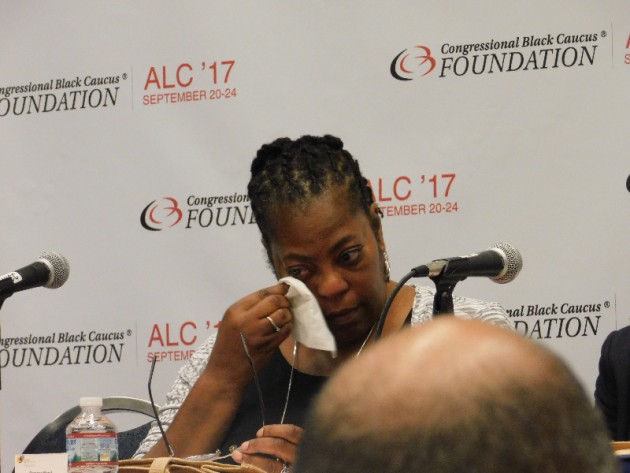WASHINGTON (NNPA) – More than two centuries ago,African-Americans were counted as three-fifths of a person in theConstitution. A new Equality Index unveiled Wednesday by theNational Urban League shows that Blacks today are less thanthree-quarters of the way toward reaching equality with Whites.
“That statistic, drawn from plumbing the status of Black Americansin the five areas of education, economics, health, social justiceand civic engagement, measures the ‘equality gap,’ the progress yetto be made before one can declare that Black Americans and WhiteAmericans live in a society in which race produces no negativeaccounting,” says Marc H. Morial, president and CEO of the NationalUrban League.
To arrive at a composite score, Morial says, the researchersassigned a points system: 30 for economics, 25 for health, 25 foreducation, 10 for social justice and 10 for civic engagement.Within each large area, weighted points were assigned to subgroups.In economics, for example, the most weight was assigned to theattainment of medium income, closely followed by employment andhousing. At the other end of the spectrum, wealth formation andprogress in closing the digital divide were not accorded nearly asmany points.
Of the five areas measured, Blacks did better than Whites only incivic engagement, which included four sub-categories: thedemocratic process, volunteerism, collective bargaining andgovernment employment.
The economic status of Blacks was 56 percent of their Whitecounterparts; health, 78 percent; education, 76 percent; socialjustice, 73 percent and exceeded Whites in civic engagement by .08percent.
Accompanying the information on the Equality Index were a series ofessays focusing on such issues as the economy, education, healthand business. In his essay, Samuel L. Myers Sr., a MassachusettsInstitute of Technology (MIT)-trained economist and professor atthe University ofMinnesota, saysthe decade between 1990 and 2000 represented one of the mostsustained periods of prosperity in the 20th Century.
“African Americans benefited from the expansion of the economyduring the past decade,” he writes. “Their household incomesincreased and the income gap between blacks and whites narrowedsomewhat, although black wage and salary gains were not as great asthose of whites. Unemployment fell but faster for white males thanfor black males and resulted in a widening of unemployment gaps forthis group during expansion and recovery. Poverty rates declinedand the general racial gaps in poverty narrowed until therecession.”
He continues, “In recent years, however, poverty rates have onceagain increased among blacks and a new widening of the racialpoverty gap has begun. Although the boom brought increased incomes,higher levels of employment, and falling poverty rates for manyAfrican Americans, few were able to translate these income gainsinto permanent assets.”
In his essay reflecting on 50 years after the Brown v. Board ofEducation Supreme Court decision outlawing segregated schoolssystems, Harvard Law Professor Charles J. Ogletree Jr. states, “Theas-yet unfinished process of implementing Brown has turned out tobe nearly as slow as the process of tearing down the Jim Crowsystem that allowed the educational segregation challenged inBrown.” In fact, a recent study by the Harvard Civil Rights Projectshowed that since 1988, the public school system has grown moresegregated each year.
Edmund W. Gordon, a senior scholar-in- residence at the CollegeBoard, says that although the state of education forAfrican-Americans is considerably better than it was 50 years ago,there is still a need for action.
Williams said that little progress has been made attracting Blacksto the health care field.
“There has been only a small increase in the proportion of AfricanAmerican physicians in medicine in the last thirty years. Blackphysicians increased from 2.5 percent of all U.S.physiciansprior to 1968 to 2.9 percent currently; and from 4.5 percent to 4.7percent of dental school enrollees and from 3.8 percent to 7.4percent of those in medical school, respectively from 1970 to2000.”
Former Detroit Mayor Dennis W. Archer, the first African-Americanelected president of the American Bar Association, writes: “Almostimmediately after the terrorist attacks of 2001, Americans began todebate whether racial profiling was acceptable. It was a subtleshift away from what until then had been the norm: tacit acceptanceand then rebuke of the practice of police and other law enforcementagents to detain individuals on the basis of color.”
Archer said, the systematic violation of the basic rights ofimmigrants arrested post-September 11 represented “one of the mosttroubling casualties of the war on terrorism.” He said Americancitizens also had their rights violated in the wake of theattacks.

